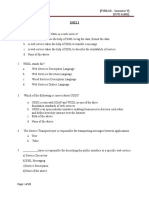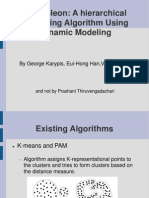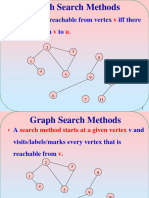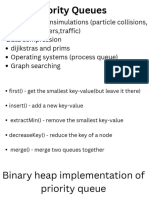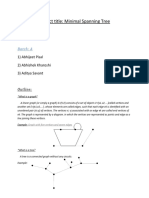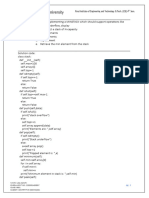100% found this document useful (1 vote)
761 views68 pagesTree and Graph Traversal Basics
This document discusses various techniques for traversing and searching trees and graphs. It covers preorder, inorder, and postorder traversal of binary trees, as well as breadth-first and depth-first search of graphs. Binary tree traversal methods output nodes in different orders, while graph search methods systematically explore all nodes reachable from a starting node.
Uploaded by
mna shourovCopyright
© © All Rights Reserved
We take content rights seriously. If you suspect this is your content, claim it here.
Available Formats
Download as PDF, TXT or read online on Scribd
100% found this document useful (1 vote)
761 views68 pagesTree and Graph Traversal Basics
This document discusses various techniques for traversing and searching trees and graphs. It covers preorder, inorder, and postorder traversal of binary trees, as well as breadth-first and depth-first search of graphs. Binary tree traversal methods output nodes in different orders, while graph search methods systematically explore all nodes reachable from a starting node.
Uploaded by
mna shourovCopyright
© © All Rights Reserved
We take content rights seriously. If you suspect this is your content, claim it here.
Available Formats
Download as PDF, TXT or read online on Scribd
/ 68






























